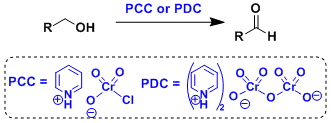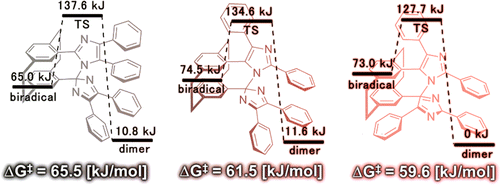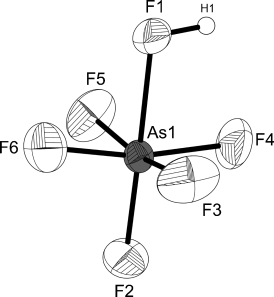General Characteristics The oxidation of alcohols by PCC (Pyridinium Chlorochromate) or PDC (Pyridinium Dichromate) works under mild conditions and can be used for compounds containing unstable ...
Monthly Archives: April 2014
Protection of 1,2-/1,3-Diols
General Characteristics 1,2- and 1,3-diols are generally protected as 5- or 6-membered cyclic acetal compounds. General References ・Ley, S. V.; Baeschlin, D. K.; Dixon, D. J.; Foster, A. C.; ...
Installing artificial nucleotide base pairs in DNA 2
In a previous post, we discussed the myriad applications of artificial nucleotide base pairs. In this post, I’d like to highlight an exquisite example that was demonstrated by Hirao and coworkers at ...
Corey-Nicolaou Macrolactonization
General Characteristics The macrolactonization reaction using 2,2’-dipyridyldisulfide and triphenylphosphine is known as the Corey-Nicolaou reaction. The cyclization step usually requires a high ...
Intermolecular N−H Oxidative Addition of Ammonia, Alkylamines, and Arylamines to a Planar σ3‑Phosphorus Compound via an Entropy-Controlled Electrophilic Mechanism
McCarthy, S. M.; Lin, Y.-C.;Devarajan, D.;Chang, J. W.;Yennawar, H. P; Rioux, R. M.;Ess, D. H.;Radosevich, A. T. J. Am. Chem. Soc. 136, 2014. 136, 4640−4650 DOI: 10.1021/ja412469e Ammonia, alkyl ...
Reduction with Metal Hydrides
General Characteristics Carbonyl compounds are reduced by metal hydride reagents to give alcohols. A number of reagents with various reducing strengths and properties are known. The metal hydride ...
Enhancing the Versatility and Functionality of Fast Photochromic Bridged Imidazole Dimers by Flipping Imidazole Rings
K. Shima, K. Mutoh, Y. Kobayashi, J. Abe, J. Am. Chem. Soc. 2014, 136, 3796–3799. DOI: 10.1021/ja501028v The widely tunable optical properties and the visible sensitivity have been required for fast ...
The Existence of Hexafluoroarsenic(V) Acid
Axhausen, J.; Lux, K.; Kornath, A.Angew. Chem. Int. Ed. 2014. 53, Early View. DOI:10.1002/anie.201308023 The homogeneous mixture of anhydrous hydrogen fluoride aHF and antimony pentafluoride AsF5 is ...
Crystal Structures of the Carborane Dianions [1,4-(PhCB10H10C)2C6H4]2- and [1,4-(PhCB10H10C)2C6F4]2- and the Stabilizing Role of the para-Phenylene Unit on 2n+3 Skeletal Electron Clusters
Kahlert, J.; Stammler, H.-G.;Neumann, B.; Harder, R. A.; Weber, L.; Fox, M. A. Angew. Chem. Int. Ed. 53, 2014. Early View. DOI: 10.1002/anie201310718 While carboranes with 2n+2 and 2n+4 (n= number of ...
Wohl-Ziegler Bromination
General Characteristics -The Wohl-Ziegler reaction is the free radical-based bromination of allylic and benzylic positions using N-bromosuccinimide (NBS). The solvents stable under free radical ...









![Crystal Structures of the Carborane Dianions [1,4-(PhCB10H10C)2C6H4]2- and [1,4-(PhCB10H10C)2C6F4]2- and the Stabilizing Role of the para-Phenylene Unit on 2n+3 Skeletal Electron Clusters](https://assets.en.chem-station.com/uploads/2014/04/for-toc.gif)
